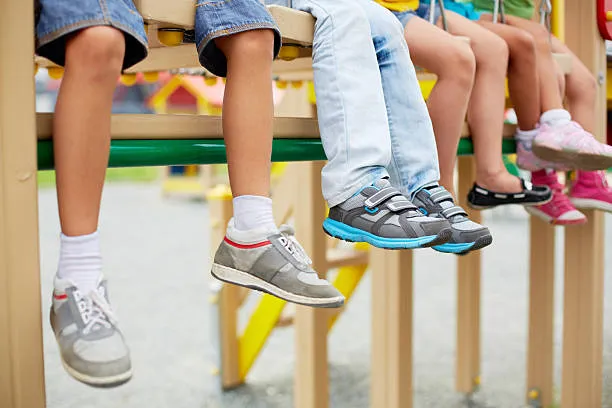No products in the cart.
When shopping for shoes, especially popular athletic footwear like sneakers, you might come across several abbreviations and sizing categories, including the term PS, which stands for Preschool. This designation is used by many major shoe brands, including Nike, Adidas, and others, to differentiate their shoe models designed specifically for children in the preschool age group, generally ranging from 3 to 5 years old. Understanding the PS designation can help ensure that you’re purchasing the correct size and style for the right age group, particularly when shopping for young children.

What Does “PS” Stand For?
As mentioned earlier, “PS” refers to Preschool, which is a specific size range tailored for young children who are no longer toddlers but not yet old enough for grade school. Typically, preschool sizes range from size 10.5 to size 3Y in the U.S. shoe sizing system. This category is designed to accommodate the growing feet of preschool-aged children, who are past the toddler stage and require more structure, support, and durability in their footwear as they become more active and independent.
These shoes are not just smaller versions of adult shoes; they are carefully constructed to meet the developmental needs of children. For example, preschoolers tend to have wider feet and softer arches than older kids or adults, so shoes in the PS category are often designed to provide extra room and support. They also typically feature flexible soles and cushioned footbeds to help absorb the impact as children run, jump, and play.
Why Is It Important to Understand PS Sizing?
Buying the right shoe size for children is crucial not only for their comfort but also for their foot health. Preschoolers are at a critical stage of physical development, and wearing shoes that are too tight, too loose, or otherwise inappropriate can cause discomfort, hinder proper foot development, or even lead to injuries.
Children in the preschool age group are highly active and spend a lot of time running and playing. Their feet are still growing, so it’s important to choose shoes that offer both support and flexibility. Shoes in the PS category are designed to provide the perfect balance of comfort, protection, and freedom of movement. Brands take extra care to ensure that PS shoes are lightweight, easy to wear, and durable enough to withstand the rough-and-tumble activities of young children.
Additionally, some PS shoes come with features like easy-to-use Velcro straps, rather than traditional laces, to make it simpler for kids to put on and take off their shoes by themselves. This helps foster independence while ensuring a proper fit.
PS in Popular Sneaker Releases
For sneaker enthusiasts and parents looking to outfit their children in the latest footwear trends, PS sizing often appears in major sneaker releases. Brands like Nike and Adidas frequently release their iconic sneaker models, such as the Air Jordan or the Yeezy line, in PS sizes. These sneakers are scaled-down versions of the adult styles but are often designed with extra considerations for children’s comfort and foot development.
In these cases, a PS size will generally look very similar to the adult version but will come with added features suited for younger wearers, such as softer materials or extra padding. For parents who are passionate about sneaker culture, this can be a fun way to involve their kids in the trend while still ensuring they are wearing shoes appropriate for their age and developmental needs.
Conclusion
Understanding what “PS” means in the context of shoes is important when shopping for young children. It stands for “Preschool,” a sizing category tailored to fit children typically between 3 and 5 years old. These shoes are designed to accommodate the unique needs of developing feet, offering comfort, support, and durability. Whether you’re buying shoes for everyday wear or looking to grab the latest sneaker release for your little one, knowing the significance of PS sizing ensures that you’re making a choice that benefits both their style and foot health.
